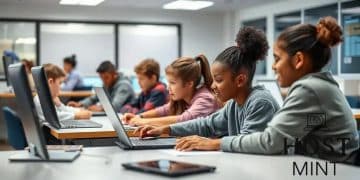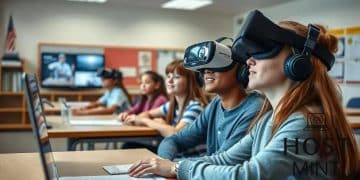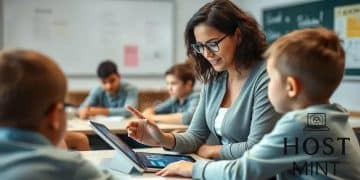Open educational resources: What teachers need to know
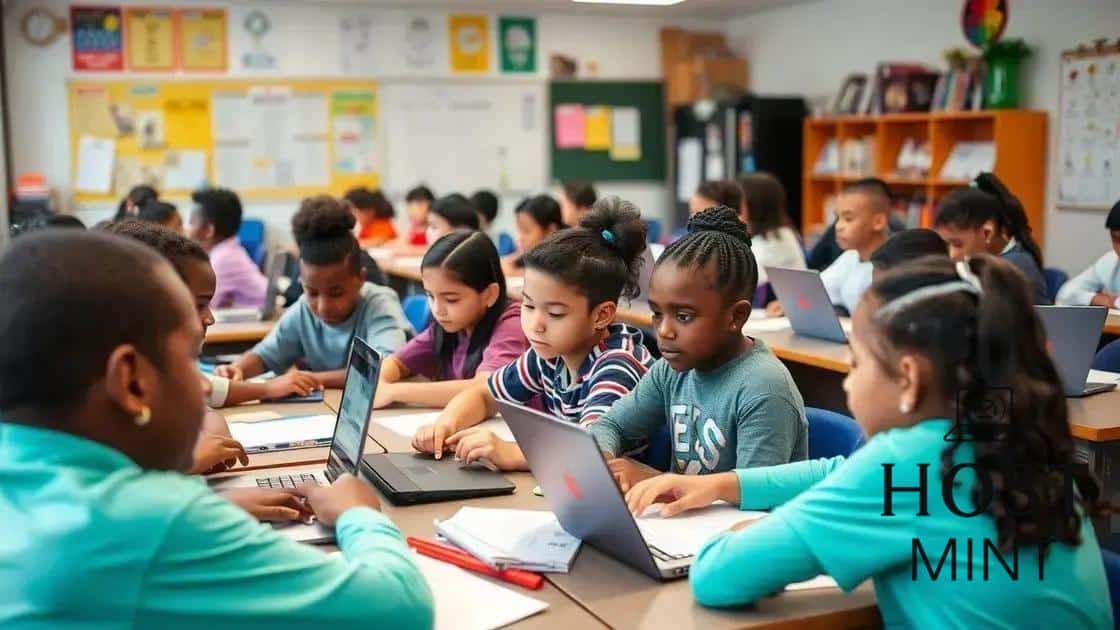
Open educational resources (OER) are freely accessible teaching materials that enhance learning by reducing costs, providing diverse options, and promoting collaboration among educators, though challenges like quality and access to technology persist.
Open educational resources are changing the way teachers approach education. But what do they really mean for your classroom? Let’s dive into their significance and how they can enrich your teaching experience.
Understanding open educational resources
Understanding open educational resources is essential for educators who want to enhance their teaching methods. These resources are freely accessible materials that can be used for teaching, learning, and research. In this section, we’ll explore what they are and their significance in the educational landscape.
What are open educational resources?
Open educational resources (OER) include a variety of materials such as textbooks, lesson plans, and multimedia resources that are available for free. They can be modified and shared, which allows teachers to tailor content to fit their students’ needs.
Benefits of using OER
There are numerous advantages to utilizing open educational resources. Here are some of the most significant benefits:
- Cost-effective teaching materials
- Flexible adaptation to various teaching styles
- Access to a wide range of subjects and materials
- Encouragement of collaborative learning and sharing among educators
Moreover, OER can significantly reduce the cost of education for students. Traditional textbooks can be expensive, but with OER, students can access the same quality of material for free. This accessibility not only benefits students but also promotes a more inclusive educational environment.
As educators integrate open educational resources into their curricula, they begin to notice positive changes in student engagement and learning outcomes. Being able to customize and update materials means that teachers can present the most relevant information to their students. This adaptability is vital in today’s fast-paced world.
Real-world OER examples
Some popular platforms where teachers can find and share OER include:
- OER Commons
- OpenStax
- Merlot
- Creative Commons
These platforms provide a plethora of resources that educators can utilize, making it easier to incorporate OER into lessons. Engaging with these resources can lead to a richer educational experience for both students and teachers.
Benefits for teachers and students

The benefits of open educational resources extend to both teachers and students, transforming educational experiences in numerous ways. These resources offer new opportunities for collaboration, innovation, and accessibility in learning.
Cost savings for education
One of the most significant advantages is the cost-effectiveness. Traditional textbooks can be expensive, placing a financial burden on students and schools. With OER, both teachers and students can save money. Accessible materials reduce overall education costs, promoting equity.
Enhanced learning experiences
Using open educational resources allows for a more personalized learning journey. Teachers can select content that resonates with their classroom dynamics and students’ interests. Customizable resources cater to different learning styles.
- Interactive assessments promote engagement.
- Diverse formats accommodate various learning preferences.
- Timely updates keep materials relevant.
- Teachers can share their adaptations with peers.
Moreover, this flexibility encourages innovation. Teachers can experiment with new teaching strategies and collaborate by sharing materials, enhancing the overall educational community.
Collaboration among educators is vital. The ability to share and remix resources fosters a culture of teamwork. When teachers work together, they can create more impactful learning experiences for their students. By pooling their expertise, they can develop rich, updated content that benefits all involved.
Increasing engagement and accessibility
The use of OER also leads to increased student engagement. When students have access to relevant and engaging materials, their motivation improves. It’s easier for teachers to connect lessons to real-world applications. For instance, using multimedia resources makes complex subjects more accessible.
Open educational resources help bridge the gap for marginalized students. Accessibility ensures that everyone, regardless of background, can access quality educational materials. This inclusivity is crucial in creating equitable learning environments.
How to find quality resources
Finding quality resources among open educational materials can be challenging yet rewarding. When teachers know how to search effectively, they can access a wealth of information that enhances their teaching.
Start with reliable platforms
Various platforms provide access to open educational resources. Some of the most trusted include:
- OER Commons
- OpenStax
- MERLOT
- Creative Commons
These platforms offer a range of materials, ensuring quality and relevance. By starting your search here, you can save time and ensure you are using reputable sources.
Evaluating the quality of resources
When you find a resource, it’s essential to evaluate its quality. Look for:
- Clear learning objectives
- Engagement strategies for students
- Alignment with curriculum standards
Also, consider the credibility of the author or institution that created the resource. Peer-reviewed or well-documented materials are generally more trustworthy.
Additionally, checking user reviews can significantly help assess how effective a resource has been for other educators. Feedback from your peers often highlights strengths and potential challenges.
Using search techniques
Effective search techniques are key to finding what you need. Be specific with your keywords when searching online. Instead of using broad terms like “math resources,” try phrases like “high school algebra open resources.” This targeted approach helps narrow down results.
Another effective technique is to use advanced search filters on content platforms. These filters allow you to specify the type of content, grade level, and subjects. Utilizing these tools can lead to more relevant and higher-quality materials.
As you explore, bookmarking useful resources can help keep your findings organized. Creating a dedicated folder for different subjects or grades may also streamline your lesson planning.
Best practices for integrating resources
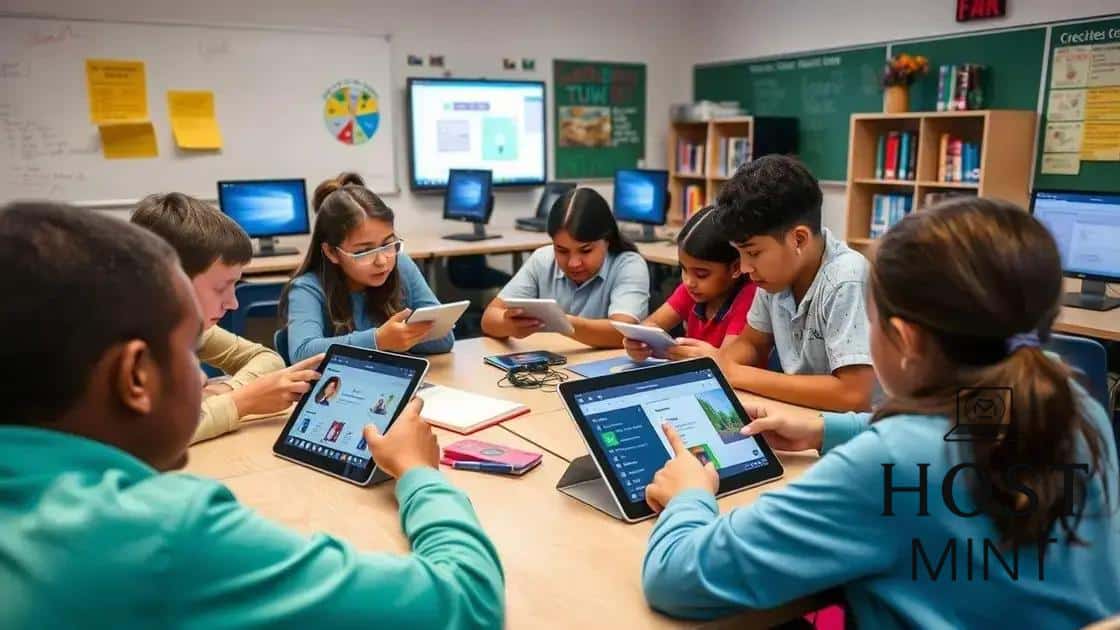
Integrating open educational resources into the classroom can enhance learning experiences for students. It’s essential to apply best practices to maximize their effectiveness and ensure a smooth transition.
Align resources with curriculum goals
Before using any resource, it’s important to ensure it aligns with your curriculum goals. This alignment helps in creating a cohesive learning experience. Consider how each resource supports your lesson plans and addresses the skills you want students to develop.
Incorporate diverse materials
Using a variety of materials can keep students engaged. Incorporate resources that include videos, interactive activities, and readings. This mix caters to different learning styles and can help maintain student interest. Here are some effective materials to consider:
- Interactive simulations
- Multimedia presentations
- Case studies and real-world examples
- Quizzes and assessments
Blending different types of resources not only enriches lessons but also promotes collaboration among students. Group activities using different materials can foster discussion and allow students to learn from each other.
Use technology effectively
Leveraging technology is crucial when it comes to integrating open educational resources. Tools like learning management systems (LMS) or platforms dedicated to OER can streamline access and organization. Teachers can create online assignments, distribute materials quickly, and track student progress easily.
Moreover, training students on how to use digital tools can empower them to take charge of their learning. Providing tech support and resources increases their confidence and ability to utilize OER effectively.
Seek feedback
After implementing new resources, it’s essential to gather feedback from students. Understanding how they perceive the materials can guide future choices. This feedback helps determine what works best and what may need adjustment.
Encouraging students to reflect on their learning experiences and discussing their preferences can lead to better resource selection. Involving them in the process fosters ownership of their education.
Challenges in using open educational resources
While open educational resources provide numerous benefits, there are challenges educators face when implementing them in the classroom. Understanding these challenges can help teachers prepare and find solutions.
Quality and reliability
One of the main concerns is the inconsistency in quality. Not all open educational resources are created equal. Some materials may not meet educational standards or may be outdated. This inconsistency can make it difficult for teachers to select suitable content.
Training and support
Another challenge is the need for adequate training and support. Teachers may not have the skills to properly locate, evaluate, and integrate OER into their lessons. Often, educators are not provided with enough professional development to feel confident in using these resources.
Having access to support can significantly impact the successful incorporation of OER. Schools should consider investing in training programs that help teachers learn how to effectively use these resources.
Access to technology
Access to technology also poses a challenge. While OER are often digital, not all students have equal access to devices or reliable internet connections. This digital divide can affect student engagement and participation.
Ensuring that all students can access OER-rich materials is crucial for creating an equitable learning environment. Schools might explore options like lending devices or offering offline resources for those who need them.
Finding and curating resources
Finding high-quality OER can be time-consuming. Educators often spend hours searching for the right materials. Without a clear process or guide, the task can be overwhelming. Curating a collection of reliable resources takes effort and regular updates.
Teachers should collaborate to share useful resources and strategies for finding the best materials, making the process more manageable for everyone.
FAQ – Frequently Asked Questions about Open Educational Resources
What are open educational resources (OER)?
OER are freely accessible materials that educators can use for teaching, learning, and research, including textbooks, lesson plans, and multimedia.
How do OER benefit teachers and students?
OER reduce costs for educational materials, provide diverse learning options, and enhance engagement, making education more accessible for everyone.
What challenges do teachers face when using OER?
Teachers may encounter issues such as varying quality of resources, the need for proper training, and ensuring equitable access to technology.
How can I find quality OER for my classroom?
Start by using reliable platforms like OER Commons and OpenStax, and evaluate resources based on alignment with curriculum goals and user reviews.

